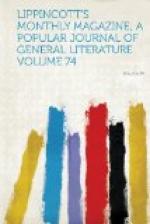Until recently there was a fifth,—Serjeants’ Inn, the members of which were lawyers who had risen to the rank of serjeant, or to the bench itself. Formerly such promotions terminated membership in the original Inn; but since the abolishment of the rank of sergeant at the English bar Serjeants’ Inn has ceased to exist,—the name surviving only in the locality,—and the four Inns have readmitted those of their members on whom judicial honors were bestowed.
Each Inn possesses certain smaller or subordinate Inns, which formerly served as preparatory schools, but which are now mere collections of chambers. There are thus attached to the Inner Temple Clement’s Inn, Clifford’s Inn, and Lyon’s Inn; to the Middle Temple, New Inn.
All the Inns of Court are unincorporated voluntary societies. In our modern nomenclature the name “inn” may seem a strange one for an institution of learning; but the term is a literal rendering of the ancient title hospitia applied to them in the Latin records, as distinguished from public lodging-houses (diversoria).
Each Inn consists of a hall, a chapel, a law-library, a set of rooms for the benchers, and a large number of houses, divided into small suites known as “chambers,” and occupied chiefly by barristers, solicitors, and students, though tenancy is not restricted to these classes. The quiet, the studious environment, and the freedom from certain social obligations unavoidable in more fashionable quarters, have at all times rendered residence in the several Inns peculiarly attractive to that large class in England which consists in the main of young men of good family, moderate fortune, and no particular occupation.
The Inns possess the exclusive right of “calling students to the bar,"[A] also of “disbarring” a barrister for questionable practices,—a right exercised by Gray’s Inn in 1864 in the case of the late erratic but brilliant Dr. Kenealy, counsel for the notorious Tichborne “claimant.” From their decision no court, as such, can give relief. The disbarred one has only the right of appeal to and review by certain of the judges. The Inns neither govern nor license attorneys, who are admitted to practice by the courts.
[Footnote A: The origin of this term dates from the venerable custom of calling students to the bar that divided the benchers’ dais from the body of the hall to bear their part in the “meetings” or discussions on knotty legal topics. We are informed by Lord Campbell that Sir Edward Coke “first evinced his forensic powers when deputed by the students to make a representation to the benchers of the Inner Temple at one of the ‘moots’ respecting the poor quality of the commons served in the hall. He argued with so much quickness of penetration and solidity of judgment that he gave entire satisfaction to the students and was much admired by the benchers.”]




